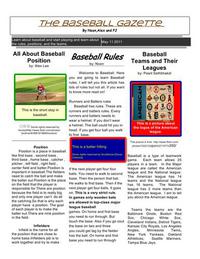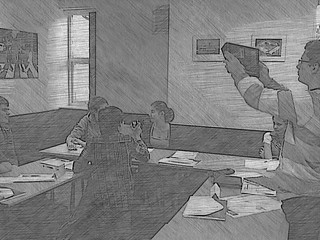Do Now is a weekly activity for students to respond to current issues through the use KQED's award-winning online media resources and social media tools like Twitter.
Do Now orientation
Below are some materials for you to look at at your leisure. The orientation is asynchronous, which means that you can view them at any time between now and Sept. 13.
To show that you have completed looking at the materials, I require that you fill out an action plan. This plan will help you think through Do Now implementation with your students. It's a Google form that you will fill out and the link is at the end of this email.
So here are the materials for the orientation. They consist of videos for viewing and then the action plan that you must fill out. The entire orientation should not take more than 2 hours to complete. For each part, click on the title of the section to access the video.
Part 1: Set the stage: How Do Now looks in the classroom. This video profiles how a class at Burton High School in San Francisco implemented KQED Do Now. We hear from the Social Studies teacher and her students about the project and its impact.
Part 2: The Value of Do Now: KQED Do Now overview. This video is a basic overview of KQED Do Now, outlining what Do Now is and explains how it adds value to learning.
Part 3: Twitter Basics
This section contains 4 short videos (well, the Twitter 101 is a little longer) that provide a basic understanding of Twitter, its interface, functionality, how to download it and use it, and how to use if for Do Now. These videos may be useful to share with your students as well. The links to the videos and the guide are here:
1. Twitter 101 – An Overview of Twitter's Interface and Functionality
2. How to Set up a Twitter Account on your Computer
3. How to Download the Twitter App and Set Up an Account on a Mobile Device
4. How to Access Do Now on Twitter and Tweet to Join the Conversation
Part 4: Preparing to Implement Do Now with your Class
This video explores all of the variables and challenges of implementing Do Now in the classroom, and will help you plan for success. We also published a Guide to Using Twitter for Your Teaching Practice that can be useful for thinking about how to introduce it to your class in an educational context. You can access the Twitter Guide here<
http://education.kqed.org/edspace/how-to-use-twitter-in-your-teaching-practice/>.
Part 5: Try This Week's Do Now for Practice
Go ahead and try doing this week's Do Now, which
looks at the pay for fast-food workers. We are asking students whether they would pay more for fast food if the money would go to increasing workers' pay. Here's the link to this week's Do Now:
http://blogs.kqed.org/education/2013/09/06/making-fast-food-for-little-pay/
Or you can go ahead and create/open your Twitter account, follow
@KQEDedspace and then find our latest Do Now tweet.
You can retweet something meaningful that you find on Twitter, tweet an interesting article that you feel addresses the issue, tweet an opinion, or reply to someone who already tweeted for this Do Now. Remember to use
@KQEDedspace and
#DoNowFastfood in your tweet.
The last part of the orientation asks you to fill out the action plan which is a link to a
Google form where we ask a series of questions that will help you come up with a strategy to implement Do Now. You should copy and paste your responses so that you have a record of them. Again, the action plan is due on Sept. 13 so that you are ready to begin Do Now with your students the week of Sept. 16.
























